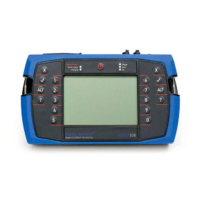Section 4 — Measurement Types and their Uses
101
Order Tracking
If machine speed varies significantly while a recording is being taken, the
resulting spectral peaks might display as smeared bumps rather than
sharp peaks. Subtle spectral features that indicate early bearing or
mechanical defects may no longer be clearly resolved in the spectrum.
This problem does NOT apply to normal constant-speed machines. It
relates to variable-speed machines and is of particular concern on low
speed machines. Low speed measurements tend to be very long in
duration. This allows time for the machine’s speed to change
significantly while a recording is taken.
The number of orders being recorded is also a significant factor that
must be understood in relation to peak smearing. Consider a turbine
that experiences a speed increase of 2% during a recording. This speed
variation will have relatively little impact on the first order running speed
peak. However, at 50 orders the impact will be significant. The peak will
be smeared from its original location to the original location of the 51st
order (2% x 50 orders = 100% of an order).
The order tracking system prevents smearing of spectral peaks. To do
this, it automatically adjusts the data sampling rate to obtain a constant
number of samples per revolution of the machine. To provide the precise
timing information required, a tachometer sensor must be used. This
tachometer should be positioned on the highest speed shaft if the
machine uses a gearbox. This will provide the most frequent timing
information to the order tracking system.
To achieve order tracking, your instrument digitally resamples data
during acquisition at the required samples-per-rev rate. The digital
processing techniques employed ensure very high signal quality and are
able to tolerate significant machine speed variations of between half
and twice the speed relative to the machine speed when recording
starts.

